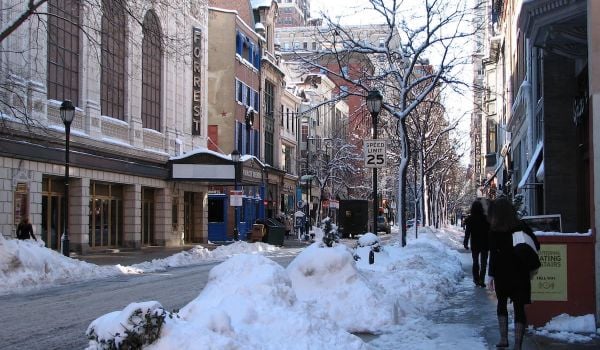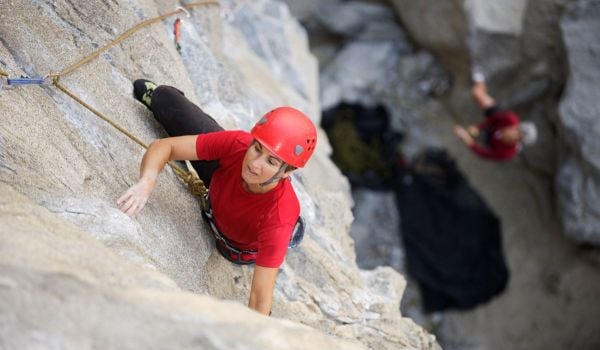![]()
As banks and developers place “coming soon” signs on every vacant lot within a 20-mile radius of our major cities, some are asking whether or not rapid suburban growth is sustainable in the time of the subprime mortgage and credit crisis. What does irresponsible development lead to? Atlantic.com’s Christopher Leinberger provides interesting figures on what he calls “The Next Slum,” suburbs once sheltered from crime and decay, now the result of poor planning and abandonment from developers.
Highlights-
“At Windy Ridge, a recently built starter-home development seven miles northwest of Charlotte, North Carolina, 81 of the community’s 132 small, vinyl-sided houses were in foreclosure as of late last year … Charlotte’s crime rates have stayed flat overall in recent years—but from 2003 to 2006, in the 10 suburbs of the city that have experienced the highest foreclosure rates, crime rose 33 percent.”
“In December, after a stray bullet blasted through her son’s bedroom and into her own, Laurie Talbot, who’d moved to Windy Ridge from New York in 2005, told The Charlotte Observer, “I thought I’d bought a home in Pleasantville. I never imagined in my wildest dreams that stuff like this would happen.”
“Civic organizations in some suburbs have begun to mow the lawns around empty houses to keep up the appearance of stability. Police departments are mapping foreclosures in an effort to identify emerging criminal hot spots.”
— This is a noteworthy observation. How will cities and agencies respond? What makes a slum? Is it merely “giving up” on an area and calling it an “emerging criminal hot spot?”
“(Arthur C.) Nelson (director of the Metropolitan Institute at Virginia Tech) forecasts a likely surplus of 22 million large-lot homes (houses built on a sixth of an acre or more) by 2025—that’s roughly 40 percent of the large-lot homes in existence today.”
“The suburban dream began, arguably, at the New York World’s Fair of 1939 and ’40. “Highways and Horizons,” better known as “Futurama” … E. B. White wrote in Harper’s, “A ride on the Futurama … induces approximately the same emotional response as a trip through the Cathedral of St. John the Divine … I didn’t want to wake up.”
(see my previous post, “Raygun Gothic and Populuxe Culture: The Next American City, Today!”)
“Per square foot, urban residential neighborhood space goes for 40 percent to 200 percent more than traditional suburban space in areas as diverse as New York City; Portland, Oregon; Seattle; and Washington, D.C.”
Another interesting note, as I mentioned in another previous post, “How Grandma Pays the Blitzkrieg Rent,” if you’ve owned living space in a major city since 1971, you can congratulate yourself on a successful luxury investment.
“Builders and developers tend to notice big price imbalances, and they are working to accommodate demand for urban living. New lofts and condo complexes have popped up all over many big cities. Suburban towns built in the 19th and early 20th centuries, featuring downtown street grids at their core, have seen a good deal of “in-filling” in recent years as well, with new condos and town houses, and renovated small-lot homes just outside their downtowns.”
“In most metropolitan areas, only 5 to 10 percent of the housing stock is located in walkable urban places (including places like downtown White Plains and Belmar). Yet recent consumer research by Jonathan Levine of the University of Michigan and Lawrence Frank of the University of British Columbia suggests that roughly one in three homeowners would prefer to live in these types of places. In one study, for instance, Levine and his colleagues asked more than 1,600 mostly suburban residents of the Atlanta and Boston metro areas to hypothetically trade off typical suburban amenities (such as large living spaces) against typical urban ones (like living within walking distance of retail districts). All in all, they found that only about a third of the people surveyed solidly preferred traditional suburban lifestyles, featuring large houses and lots of driving. Another third, roughly, had mixed feelings. The final third wanted to live in mixed-use, walkable urban areas—but most had no way to do so at an affordable price. Over time, as urban and faux-urban building continues, that will change.”
“If gasoline and heating costs continue to rise, conventional suburban living may not be much of a bargain in the future. And as more Americans, particularly affluent Americans, move into urban communities, families may find that some of the suburbs’ other big advantages—better schools and safer communities—have eroded.” — Did we not see a diminishing source of energy, like oil, as a warning sign that this might happen?
“The experience of cities during the 1950s through the ’80s suggests that the fate of many single-family homes on the metropolitan fringes will be resale, at rock-bottom prices, to lower-income families—and in all likelihood, eventual conversion to apartments.” -The new “projects?” Convenient relocation of the poor?
“As the residents of inner-city neighborhoods did before them, suburban homeowners will surely try to prevent the division of neighborhood houses into rental units, which would herald the arrival of the poor.”
“The shift to walkable urban environments will give more people what they seem to want … By the estimate of Virginia Tech’s Arthur Nelson, as much as half of all real-estate development on the ground in 2025 will not have existed in 2000. It’s exciting to imagine what the country will look like then. Building and residential migration seem to progress slowly from year to year, yet then one day, in retrospect, the landscape seems to have been transformed in the blink of an eye. Unfortunately, the next transformation, like the ones before it, will leave some places diminished.”
To read the article in full, click here.















